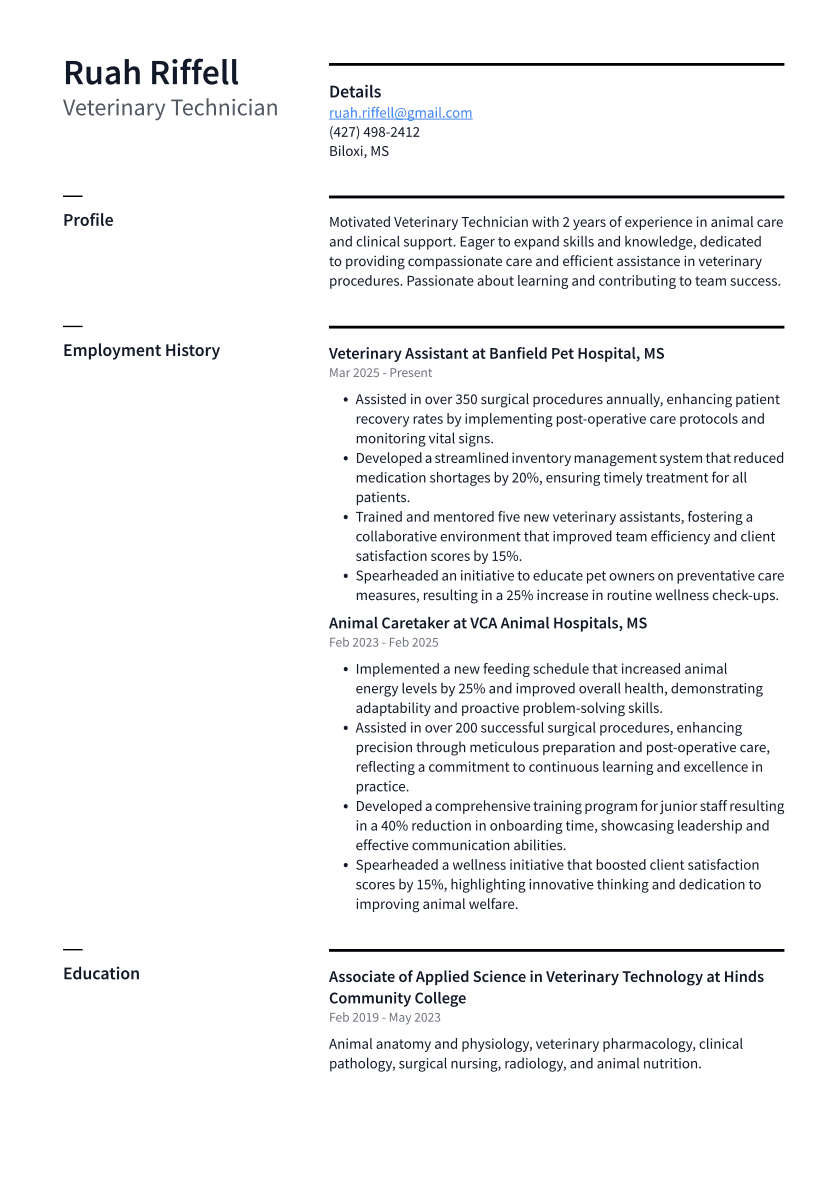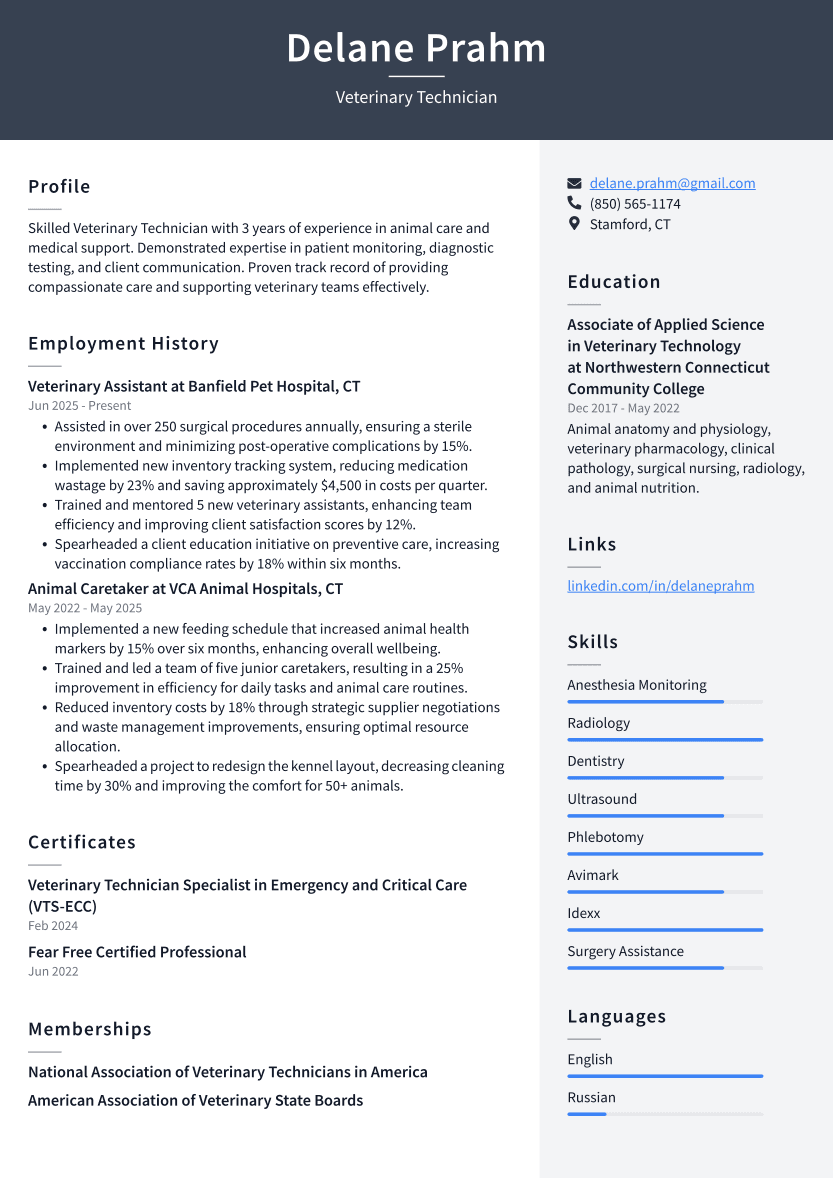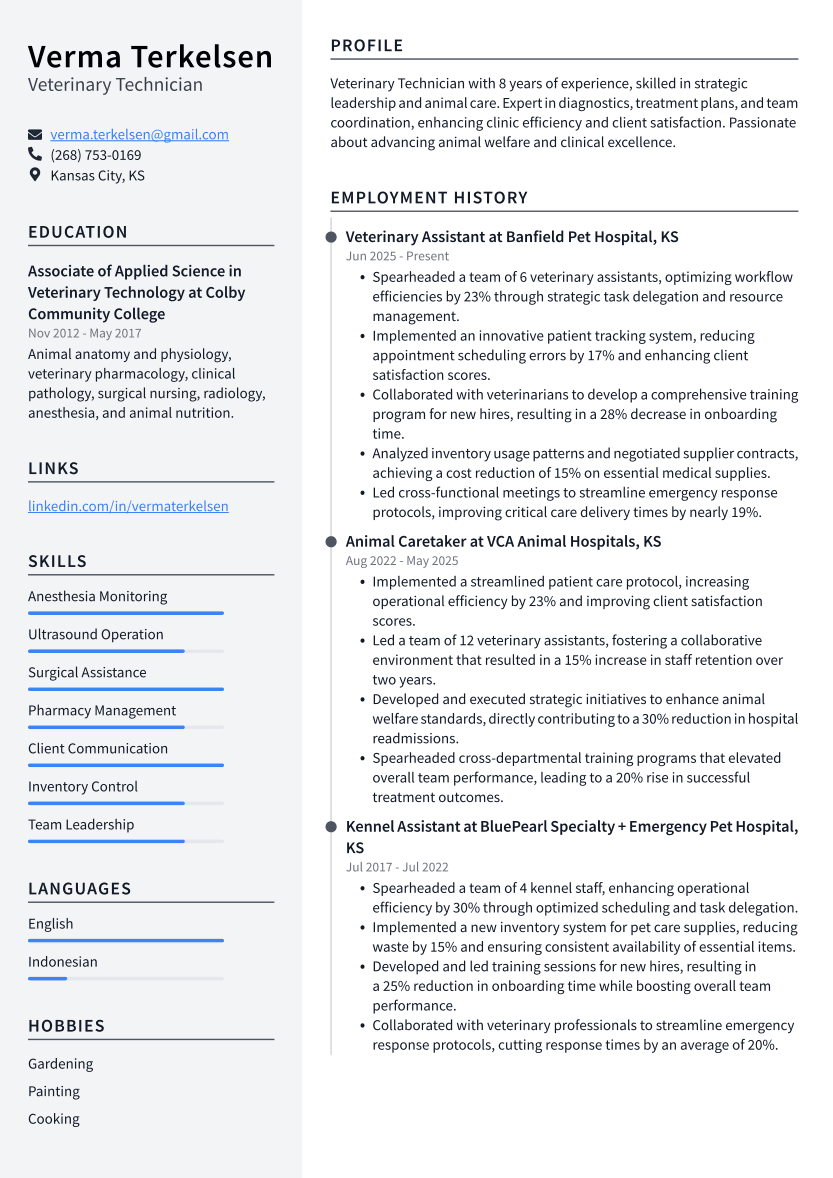Veterinary Technician Resume Examples

Crafting an effective resume for a Veterinary Technician position is like concocting the perfect catnip tea—irresistible to recruiters. This article serves up a tantalizing guide for readers looking to finesse their resumes, offering insights into essential skills, experiences, and the art of highlighting your canny way with critters. Prepare to learn the secrets of making your application purr!
Must-Have Elements on a Veterinary Technician Resume
- Contact Information: Keep it current; include phone and email.
- Summary: Brief snapshot of your professional identity.
- Work Experience: Highlight relevant job roles and achievements.
- Skills: Showcase abilities related to veterinary tasks.
- Education: List degrees and certifications in veterinary fields.
Focus on showcasing hands-on experience with animal care, emphasizing skills in administering medications and understanding animal behavior. Highlight certifications or coursework related to veterinary technology, and include examples of successful collaboration with veterinarians in clinical settings.
Pro Tip: Incorporating specific skills and keywords tailored to veterinary technician roles on your resume can be the golden ticket to navigating the often-unforgiving filters of an Applicant Tracking System, ensuring your application gets the attention it deserves.
Set Your Veterinary Technician Resume Apart
Emphasize your knack for improving clinic efficiency by detailing how you implemented a new patient tracking system, slashing appointment wait times by 30%. Highlight your role in a vaccination drive that increased pet immunizations by 40%, showcasing not just your technical skills but also your impact on community health.
- Utilize a clean, professional font like Arial or Calibri, keeping font size between 10 and 12 points to ensure clarity and legibility for quick skimming by potential employers.
- Incorporate plenty of white space through adequate margins and spacing between sections, which helps in guiding the reader's eye smoothly from one section to the next without overwhelming them.
- Use bullet points to highlight key responsibilities and achievements, making it easy for hiring managers to spot relevant skills and experiences at a glance.
Pro Tip: Tailoring your resume highlights the most relevant skills and experiences, making you stand out to specific employers.
Sample Resume for Entry-Level Veterinary Technician
An entry-level Veterinary Technician resume focuses on education and basic skills, while mid- or senior-level resumes highlight extensive experience and specialized expertise.
Professional Veterinary Technician Resume Example
A mid-level Veterinary Technician resume emphasizes a mix of solid experience and growing expertise, bridging the foundational skills of entry-level with the leadership qualities of senior roles.
Senior-Level Veterinary Technician Resume Example
A senior-level Veterinary Technician resume highlights extensive experience, advanced technical skills, leadership roles, and possibly specialized certifications, distinguishing it from the more generalized or developing competencies found in entry-level or mid-level resumes.
Veterinary Technician Resume Success: Do’s, Don’ts, and Essential Checklist
DO'S
- Highlight relevant experience with specific examples of skills used in animal care.
- Include certifications and licenses that demonstrate your qualifications and expertise.
- Use action verbs to describe your responsibilities and achievements in previous roles.
DON'TS
- Don't clutter it with irrelevant personal details; focus on your skills and experience.
- Don't include jargon only understandable to you; make your accomplishments clear and relatable.
- Don't forget to tailor each submission to the specific job; generic resumes miss the mark.
CHECKLIST
- Highlight relevant skills specific to veterinary care.
- Showcase hands-on experience with animal care responsibilities.
- Include certifications or specialized training related to veterinary science.
- Avoid using vague or generic descriptions of job duties.
- Steer clear of clutter; keep the format clean and easy to read.
- Don’t forget to tailor your resume for each job application.






